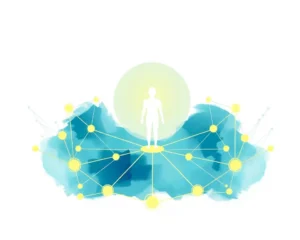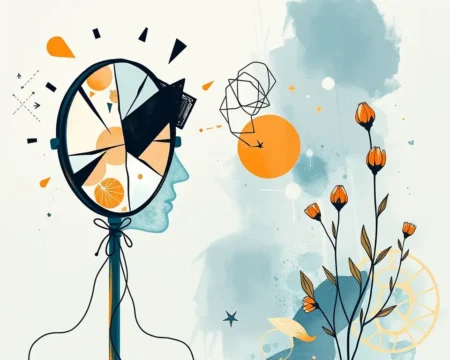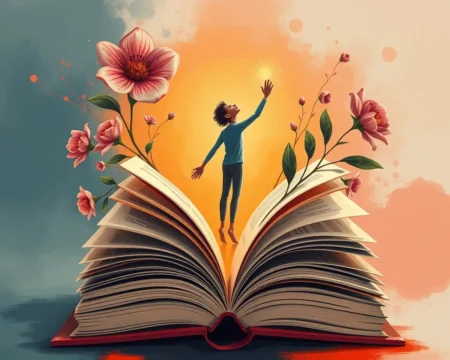Art, music, and nature offer profound benefits for mental health, providing avenues for stress reduction, emotional expression, and cognitive enhancement. Engaging with these elements, whether through active creation, mindful appreciation, or immersive experiences, can significantly improve overall well-being.
The Healing Power of Art
Art therapy is a mental health profession that uses active art-making, the creative process, applied psychological theory, and human experience within a psychotherapeutic relationship to enrich the lives of individuals, families, and communities. It is based on the idea that people can recover and feel better through artistic expression. Art therapy is used to reduce conflicts and distress, improve cognitive functions, foster self-esteem, and build emotional resilience and social skills. It engages the mind, body, and spirit in ways that are distinct from verbal communication.
Benefits of Art for Mental Health
- Reduces Stress and Anxiety: Creating art can act as a form of meditation, helping to quiet the mind and enter a state of relaxation, leading to lower stress hormone levels and a calmer mood. Studies have shown that artistic activities like sculpting, painting, or drawing can lower stress levels and promote mental calmness.
- Improves Emotional Expression: Art therapy provides a way to express emotions and experiences not easily expressed in words. It helps individuals externalize their emotions, thoughts, and behaviors through art, leading to less judgment and shame toward themselves.
- Boosts Cognitive Function: Creating art can improve brain function and enhance cognitive abilities. It stimulates the creation of new neural pathways in the brain, improving overall well-being, preventing depression, and even slowing down aging.
- Enhances Self-Esteem: Completing a creative project can trigger the release of dopamine, which can increase drive, improve concentration, and make you feel good. Participating in creative activities can help people cope with stress and despair and alleviate the burden of chronic mental illnesses.
- Provides a Sense of Control: Art therapy helps people feel more in control of their own lives and assists in managing pain by moving mental focus away from the painful stimulus.
Types of Art Therapy Techniques
- Collage: Creating a collage can help individuals explore their emotions and experiences by selecting and arranging images, textures, and words.
- Coloring: Coloring within intricate designs or free-form can be a calming and meditative activity, reducing stress and promoting relaxation.
- Drawing: Drawing allows for self-expression and exploration of emotions through lines, shapes, and forms.
- Painting: Painting with different colors and techniques can help individuals express their feelings and gain insight into their inner world.
- Sculpting: Working with clay or other materials to create three-dimensional forms can be a tactile and expressive way to explore emotions and experiences.
The Melodic Embrace of Music
Music has a powerful effect on our emotions and can improve our mood, reduce stress levels, and alleviate symptoms of anxiety. Listening to music can activate the parasympathetic nervous system, which helps to calm the body and reduce stress responses. It can also reduce levels of the stress hormone cortisol in the body, contributing to a sense of relaxation and well-being.
Benefits of Music for Mental Health
- Reduces Stress and Anxiety: Music can bring to mind positive emotions, such as joy, nostalgia, or comfort, which can help counteract negative emotions associated with stress and anxiety.
- Improves Mood: Music can improve mood, decrease pain and anxiety, and facilitate opportunities for emotional expression. It can boost the brain’s production of the hormone dopamine.
- Enhances Cognitive Function: Different types of music can have different effects on our memory. Classical music has been found to be effective in improving memory and cognitive function.
- Facilitates Emotional Release: Engaging in music-making activities, such as drumming circles, songwriting, or group singing, can facilitate emotional release, promote self-reflection, and create a sense of community.
- Promotes Social Connectedness: Communities can leverage music’s innate ability to connect people and foster a sense of belonging through music programs, choirs, and music education initiatives.
Types of Music Therapy Techniques
- Singing: Singing can help individuals express themselves creatively, develop their social and communication skills, and build self-esteem.
- Playing Instruments: Playing instruments can provide a sense of accomplishment and improve motor skills, brain stimulation, and enhancement of the immune system.
- Listening to Music: Listening to music can help individuals relax, explore their emotions, and regulate their mood.
- Lyric Analysis: Analyzing song lyrics can provide another way to express yourself and better understand your own situation through someone else’s perspective.
- Improvisation: Improvising music with a therapist can help individuals make music and sounds that reflect how they’re feeling.
Nature’s Nurturing Embrace
Spending time in nature has been found to help with mental health problems such as anxiety and depression. Research into ecotherapy, a type of formal treatment which involves doing activities outside in nature, has shown it can help with mild to moderate depression. Being outside in natural light can lift a person’s mood, especially during the winter.
Benefits of Nature for Mental Health
- Reduces Stress and Anxiety: Being in a green space has been linked to less anxiety, fewer depression symptoms, and lower stress levels. Spending time in nature helps people with depression and kids with attention problems think more clearly.
- Improves Mood: Nature improves mood and makes people feel happier. It can generate many positive emotions, such as calmness, joy, and creativity and can facilitate concentration.
- Enhances Cognitive Function: Exposure to natural environments improves working memory, cognitive flexibility, and attentional control.
- Promotes Social Connection: Nature tends to increase generosity, cooperation, and our sense of social connection.
- Increases Physical Health: Spending time in nature can improve physical health by encouraging physical activity and providing opportunities for exercise.
Types of Nature-Based Activities
- Nature Walks: Taking group nature walks is associated with decreasing depression, improved well-being and mental health, and lower perceived stress.
- Gardening: Gardening and nurturing plants can provide a sense of purpose and accomplishment.
- Forest Bathing (Shinrin-Yoku): Spending time in a forest can lower the level of cortisol, known as a stress hormone.
- Nature Meditation: Practicing meditation techniques in natural settings combines the principles of mindfulness with the therapeutic benefits of being in nature.
- Animal-Assisted Therapy: Spending time with animals can reduce stress and anxiety and improve mood.
Integrating Art, Music, and Nature into Daily Life
Integrating art, music, and nature into daily life can be a simple yet effective way to boost mental health and overall well-being. Here are some practical tips:
- Create a Creative Space: Designate a specific area in your home for creative activities such as painting, drawing, or playing music.
- Make Time for Nature: Schedule regular outdoor activities, such as nature walks, gardening, or simply spending time in a park.
- Incorporate Music into Your Routine: Listen to your favorite music while commuting, working, or exercising.
- Join a Group: Participate in group arts interventions, such as painting, dance, or music, to reduce symptoms of depression and anxiety and foster social connection.
- Practice Mindfulness: Engage with art, music, or nature mindfully by paying attention to your senses and emotions.
By embracing art, music, and nature, individuals can unlock powerful tools for enhancing their mental health and creating a more balanced and fulfilling life.










